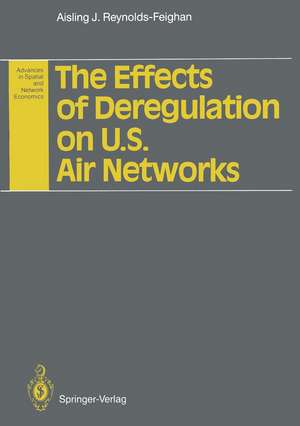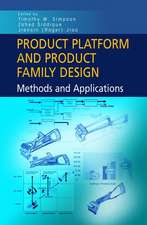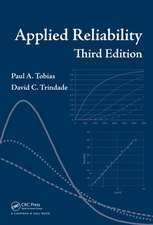The Effects of Deregulation on U.S. Air Networks: Advances in Spatial and Network Economics
Autor Aisling J. Reynolds-Feighanen Limba Engleză Paperback – 6 dec 2011
Preț: 380.84 lei
Nou
Puncte Express: 571
Preț estimativ în valută:
72.88€ • 75.81$ • 60.17£
72.88€ • 75.81$ • 60.17£
Carte tipărită la comandă
Livrare economică 14-28 aprilie
Preluare comenzi: 021 569.72.76
Specificații
ISBN-13: 9783642770630
ISBN-10: 3642770630
Pagini: 148
Ilustrații: XIV, 131 p.
Dimensiuni: 170 x 242 x 8 mm
Greutate: 0.25 kg
Ediția:Softcover reprint of the original 1st ed. 1992
Editura: Springer Berlin, Heidelberg
Colecția Springer
Seria Advances in Spatial and Network Economics
Locul publicării:Berlin, Heidelberg, Germany
ISBN-10: 3642770630
Pagini: 148
Ilustrații: XIV, 131 p.
Dimensiuni: 170 x 242 x 8 mm
Greutate: 0.25 kg
Ediția:Softcover reprint of the original 1st ed. 1992
Editura: Springer Berlin, Heidelberg
Colecția Springer
Seria Advances in Spatial and Network Economics
Locul publicării:Berlin, Heidelberg, Germany
Public țintă
ResearchCuprins
1: Introduction.- 1.1. A Brief History of U.S. Commercial Aviation Regulation and Deregulation.- 1.2. Critique of Other Studies.- 1.3. A Production Model of the Airline Firm.- 1.4. Measuring Technical Efficiency in an Airline Network.- 2: Previous Studies on U.S. Airline Deregulation.- 2.1. Economic Research on U.S. Airline Deregulation.- 2.2. Operations Researchers’ and Transport Planners’ View of Airline Operations.- 2.3. Geographical Aspects to U.S. Air Traffic Distribution.- 3: The Setting: Trends in U.S. Commercial Aviation.- 3.1. The National Airways System.- 3.2. Patterns in U.S. Commercial Aviation 1969–88.- 3.3. Measures for Summarizing Airline and Airport Traffic Distributions.- 3.4. U.S. Air Carriers 1969–1988.- 3.5. Continental and American Airlines’ Traffic Patterns, 1969–88.- 4: Development of a Production Model of the Airline Firm.- 4.1. The Airline Network-Defining a Network Variable.- 4.2. The Airline’s Production Function.- 4.3. An Alternative View of the Airline’s Production Process.- 4.4. Functional Form of the Airline Production Function.- 4.5. Frontier Production Functions and the Measurement of Technical Inefficiency.- 5: Data Description and Computation of the Production Variables.- 5.1. Data Provided by Continental Airlines.- 5.2. Computed Input and Output Variables.- 5.3. Principal Components Estimates of the ‘EQUIP’ Variable.- 5.4. Gravity Model Estimates and the Route Attraction Variable.- 6: Production Function Analysis of Continental Airlines.- 6.1. Cobb-Douglas Production Function Estimates for Continental Airlines in 1987/88.- 6.2. Measuring the Efficiency of Continental’s Route System and Exploring the Characteristics of Inefficient Routes.- 7: Conclusions and Recommendations.- 7.1. Network Changes and the Role ofNetwork Organization.- 7.2. Airline Level Analysis and Route Efficiency.- References.- Author Index.





















